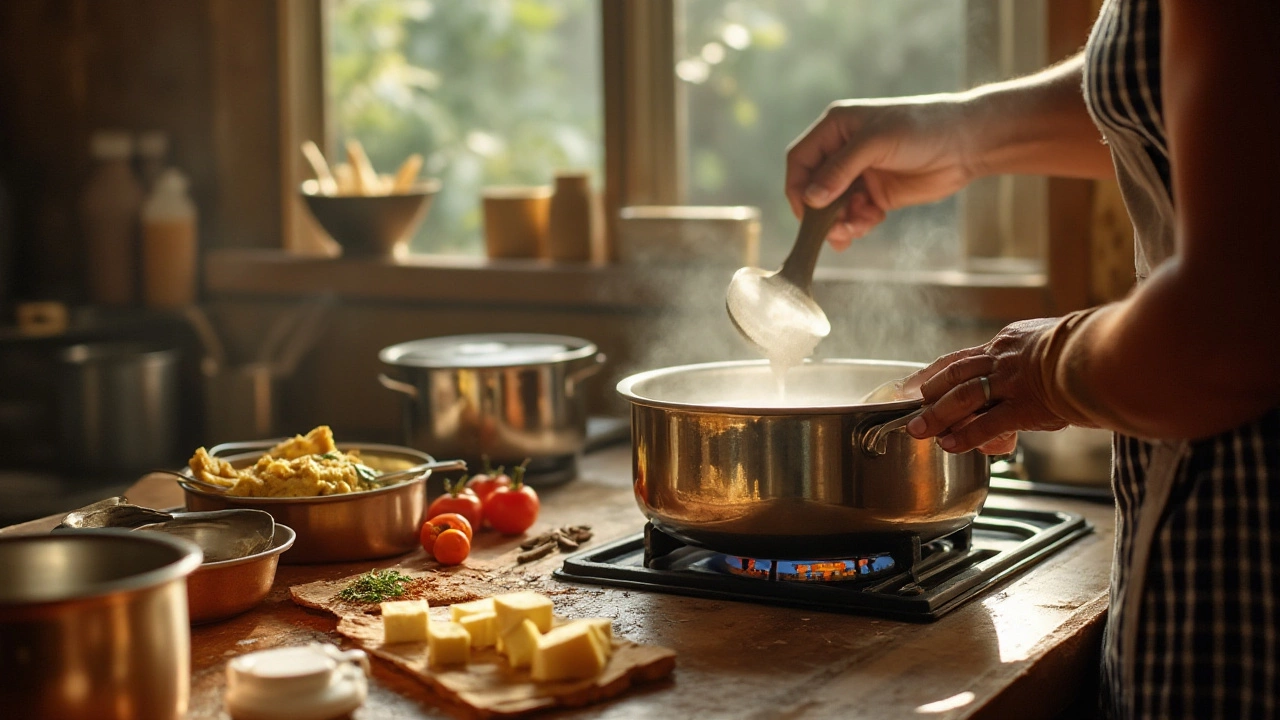Homemade Paneer: Easy Recipes, Tips & Tricks
Homemade Paneer, fresh Indian cheese made by curdling milk with a mild acid. Also known as DIY paneer, it provides a soft, milky protein that works in curries, grills, and salads. It belongs to a family of dairy cheeses, so it shares a lot with Paneer, the classic block you see in restaurant dishes, and it even rivals Tofu, the plant‑based protein many vegans love. The star ingredient behind both is Milk, usually whole cow’s milk, which supplies the casein that turns solid when an acid is added. In short, homemade paneer encompasses cheese‑making, requires milk and an acid, and influences how you plan vegetarian meals.
Why Make Paneer at Home?
When you make paneer yourself, you control texture, flavor, and hygiene. Store‑bought versions often contain preservatives that dull the milky sweetness. By heating milk to a gentle boil and adding lemon juice or vinegar, you trigger the curdling reaction that separates curds from whey. The curds gather into soft lumps, which you press to shape a firm block. This process is fast: under 30 minutes from start to finish. Plus, you can tweak the acidity level to get a crumbly paneer for stir‑fries or a firmer one for grilling. The ability to adjust these attributes makes homemade paneer a versatile base for countless Indian dishes.
Understanding the science helps avoid common pitfalls. If the milk is too hot, the proteins over‑denature and the curds become rubbery. If the acid is added too quickly, you get tiny, grainy curds that don’t hold together. The sweet spot is heating the milk to around 85‑90 °C, then slowly stirring in the acid until the whey turns pale greenish. Let the mixture sit for a minute—this lets the curds coalesce fully. Finally, drain through a clean cheesecloth and press with a weight for 15‑20 minutes for a slice‑ready block. This sequence shows how paneer requires precise temperature control, acid timing, and gentle pressure.
Many cooks wonder how paneer stacks up against tofu. Nutritionally, paneer offers more calcium and a richer, buttery taste, while tofu brings a lighter texture and higher iron. In a protein‑focused diet, paneer delivers about 18 g of protein per 100 g, comparable to tofu’s 8 g but with a different amino‑acid profile. Flavor‑wise, paneer absorbs spices beautifully because its mild taste lets masalas shine, whereas tofu’s subtlety works well in sauces that need a neutral canvas. By comparing these two, you can decide which fits a particular recipe or dietary need, making the paneer‑tofu conversation a useful tool for every home cook.
Storage is another key point. Fresh paneer keeps well in the fridge for 3‑4 days if submerged in a little cold water and sealed in an airtight container. Changing the water daily preserves its softness. For longer storage, freeze the block in a zip‑lock bag; it stays good for up to two months. When you thaw, press out excess moisture to restore its original texture. These tips make paneer a reliable pantry staple, ready for a quick curry, a creamy dip, or a grilled kebab whenever the craving hits.
Now that you know the basics, let’s talk about flavor upgrades. Adding herbs like cilantro or mint to the curds before pressing creates a fragrant, green‑spotted paneer perfect for salads. A pinch of smoked paprika or crushed black pepper in the pressing cloth gives a subtle kick that shines in tandoori marinades. Experimenting with different acids—lemon juice for a citrus note, yogurt for a tangy creaminess—lets you customize the taste to match any regional cuisine, from Punjabi makhani to South Indian sambar.
Below you’ll find a curated list of articles that dive deeper into specific aspects of paneer and related topics. Whether you’re looking for a side‑by‑side taste test with tofu, want to master the perfect curdling technique, or need storage hacks, the collection has you covered. Explore the posts, try the tips, and soon you’ll be serving fresh, homemade paneer that rivals any restaurant offering.

Which Milk is Best for Paneer Making? Key Choices Explained
Wondering which milk works best for making paneer at home? This article breaks down different types of milk and their impact on the taste, texture, and yield of paneer. Get practical tips, bust some myths, and find out what local dairies never tell you. Plus, learn how to avoid the most common mistakes when choosing milk. By the end, you'll have everything you need to make soft and fresh paneer every time.

Is It Cheaper to Make Paneer? Your Guide to Homemade Paneer Savings
Thinking about making paneer at home? This article breaks down the real cost of homemade paneer versus store-bought blocks, covering price, quality, and time investment. Find out if DIY paneer actually saves you money and what makes homemade versions stand out. Get practical tips for stretching your milk budget and reducing waste. Learn what to expect if you’re trying this for the first time.

Cheeses to Try When You're Out of Paneer
Who says you need to cancel that curry dinner just because you're out of paneer? Here's a handy guide on cheese substitutions that can slide into your recipe in a pinch. We'll explore what makes paneer unique and which cheeses come close in taste and texture. Discover affordable, easily available options and how to make the most of these ingredients in your cooking adventures.

Can Spoiled Milk Transform into Homemade Curd or Paneer?
Discover the potential of using spoiled milk as an ingredient for creating homemade curd or paneer. This in-depth article explores the science behind milk fermentation, safety considerations, and practical tips for turning expired milk into delicious culinary creations. Learn how to minimize waste while crafting flavorful dishes right from your kitchen. Embrace the art of transformation and explore creative uses of every ingredient.

Is Making Paneer at Home Worth the Effort?
Curious about crafting your own paneer at home? This article explores whether homemade paneer is worth your time and effort. Discover the health benefits, taste differences, and cost-effectiveness of making paneer from scratch. You'll also find simple tips and tricks for perfecting your homemade cheese-making process. Let's delve into the appealing world of fresh paneer and why it might just become a staple in your kitchen.